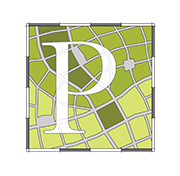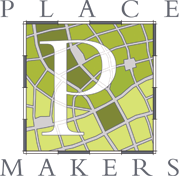A Placemaking Journal
Bryan Jones: Portrait of a Municipal Official Takin’ It to the Street
Since meeting Chuck Marohn, I've advocated for his rational Strong Towns approach to reforming our inefficient auto-oriented infrastructure system. Chuck's message to focus infrastructure decisions on their long-term return on investment is radical because he is a Traffic Engineer. Honestly, the most frustrating and irrational... Continue Reading
Tags Howard Blackson



The Future of Municipal Planning 02: Learning from Success
As the planning profession roils in the confluence of the 21st century’s Great Recession, Peak Oil/Peak Auto Travel, Millennial [Re]urbanization, and the borderline religious fervor of sustainability, I have officially declared that ours is not the same planning profession John Nolen built. So, how can planning rebuild... Continue Reading



Ways to Fail at Form-Based Codes 02: Make it Mandatory Citywide
A while back, we talked about Connections, Community, and the Science of Loneliness, and how our laws have separated not just building uses -- residential, commercial, retail, civic -- but have also separated people. And that separation has led to a spate of ills -- ill health, ill economies, and ill environments. We looked... Continue Reading



I Just Live Here: Welcome to the suburbs, deconstructed
Taking shots at the suburbs is like playing bass in a garage band: Easy to do, but hard to do well. After all, their original intent -- an idyllic melding of town and country, with all the advantages of both -- implied a tranquil, family-friendly promise that, over time, has proven notoriously unfulfilled.
Surely that’s... Continue Reading



Placemaking Gets Freaky
I’m a freak magnet.
For reasons unknown, the more, err, colorful characters of the public realm seem to find my personal space especially attractive.
If I go to a midday matinée and another patron -- let’s say an agitated mumbler in a trench coat with shoes crudely fashioned out of car wash sponges -- joins... Continue Reading



The Future of Municipal Planning: Is John Nolen rolling over in his grave?
This is not the planning profession John Nolen built. A century later, our great recession has sparked a full re-evaluation of what a city’s urban planning department should be ‘doing’ for its citizens. As witnessed in Los Angeles and San Diego, the planning profession is being measured by its eternal conundrum between... Continue Reading



Crowdsourcing = Data = Better Places
You know what the payment is for crowdsourcing? By asking other people to step up and think through solutions to some collective problem, I must commit to making a difference myself.
Every time I’ve asked you to share information with me, you have. Then I feel the need to compile it, analyze it, and organize it... Continue Reading



Healthy, or Unhealthy, by Design
A few months ago, we talked about how a great city can be like a great running buddy, calling us to venture outdoors into more active, satisfying lifestyles. The photo-essay accompanying that conversation was on the urbanity of Wilmington, North Carolina. Last week, we were in another North Carolina town, Fuquay-Varina,... Continue Reading
Category Experience, Planning and Design



Choosing to Overlook the Obvious
I live in an old house that overlooks a single-track CSX rail line. Between my front gate and the train is a two-lane, neighborhood-edge thoroughfare with a speed limit of 35 mph and an average speed closer to 40.
Though it functions as an in-town, city street, it’s classified as a state highway by the Georgia DOT,... Continue Reading
Category Planning and Design, Public Policy



Walkable Streets II: The Documenting
This time last week, I was considering common issues associated with walkable streets and mentioned that 35-40kph (25mph) moves the most traffic. I didn't even think about it as I wrote it. As something long-embedded in my brain, I just said it. Matter-of-factly.
Readers took me to task, wanting to know the source.
... Continue Reading
Category Back of the Envelope, Planning and Design












